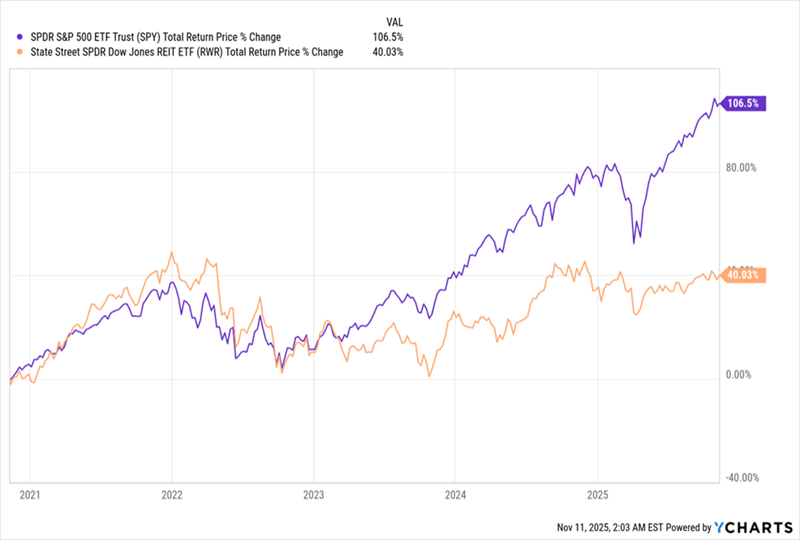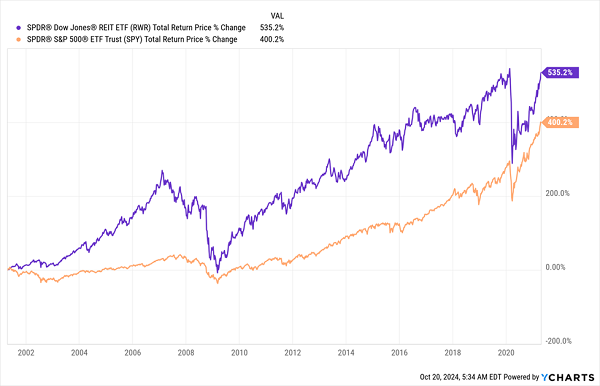It’s been a long time since we talked about pandemic bargains, but believe it or not, there’s still a big one out there.
I do think it’s finally on borrowed time, though, which is why it’s on our radar now.
I’m talking about publicly traded real estate investment trusts (REITs). What we’re looking at with REITs is a classic “buy the dip” play with a (very!) long buy window indeed. Here’s a snapshot:
REITs Trail Stocks Post-Pandemic …
Over the five years since the depths of the pandemic, the S&P 500 (shown by the popular index fund in purple above) has posted a 106.5% total return, as of this writing.… Read more


Recent Comments